GOVERNMENT AFFAIRS



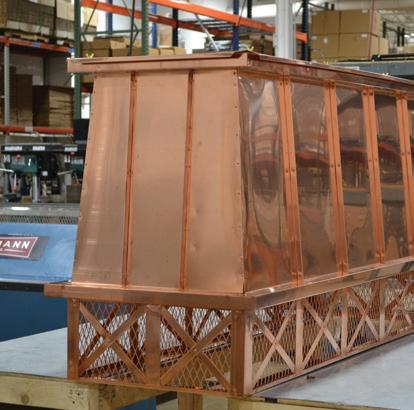

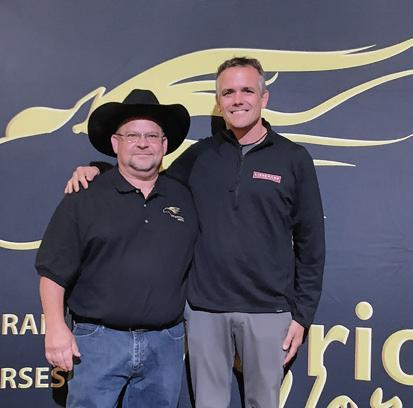






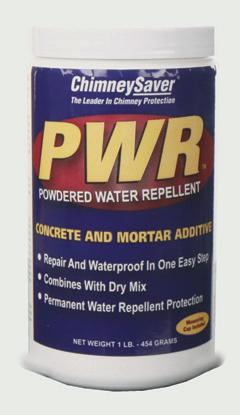

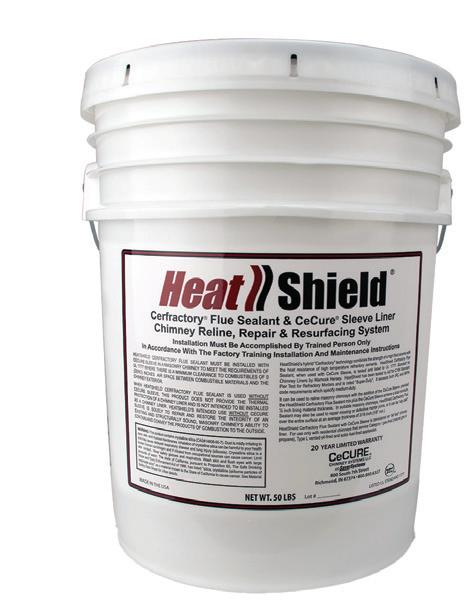





21
Train Today With the Future of Sweep Education
Try our new Respiratory Protection course for free to see the NCSG LMS platform in action.
7 NFPA, UL, and ICC Updates
An update on several key codes and standards that NCSG monitors.
8 What's the Deal With UL 1390?
The standard addresses installation of woodburning inserts into masonry fireplaces
11
HPBA Government Affairs Leadership Academy
Consider participating in HPBA's leadership training program to grow your advocacy skills.
12
Advocacy in Action
Amid fast-changing legislation, HPBA pushes forward on fuel choice, tax credits, and industry advocacy.
14
Convention Registration Opens November 28!
Key dates to know, plus a sneak peek at a few of this year's education sessions.
18
Don't Drop Your Old Business From Your Policy
As your business evolves, don't miss this hidden risk when it comes to your insurance policy.
22
How a Dutch Chimney Sweep and Coca-Cola Changed Christmas Forever Your work is part of the holiday magic.
27
Up the Ladder Sally McKnight's journey from office staff to owner.
30
WETT Affiliates and Program Expansion
Affiliates were instrumental in promoting and delivering the WETT program in the early days.
32
The Ongoing Challenge of Recruitment
Present chimney service as a skilled trade with career advancement to get better applicants.

Have you ever seen some interesting things on the job?
Submit a photo with your name and location to marketing@ncsg.org.
Free Classified Ads for NCSG Members
National Chimney Sweep Guild (NSCG) members can run one 35-word classified ad for free each calendar year. 36+ words are $1 per word after. Additional ads are $1/word or $2/word for non-members. Classified ads are non-commissionable and must be pre-paid. To place a classified ad, email marketing@ncsg.org.

Let us know what’s going on!
Submit industry concerns to NCSG’s Policy Action Center. We post live on the website and look into how we can take action. While you’re there, you can also check out the blog for past issues we’ve addressed. Check your email and Facebook to stay up to date!
November 2025, Volume 49 #10
Kailah Schmitz, CAE, Executive Director director@ncsg.org
Jessica Thornton, Associate Director and Certifications Coordinator jessica@ncsg.org
Jonathan Erdman, Director of Education education@ncsg.org
Sydney Kaizer, Director of Marketing and Communications; Sweeping Editor marketing@ncsg.org
Brittney Burton, Membership and Events Coordinator bburton@ncsg.org
Libby Almendarez, Membership and Certifications Coordinator office@ncsg.org
The views expressed in Sweeping do not necessarily reflect the views of the National Chimney Sweep Guild (NCSG) or its staff.
ADVERTISING
To advertise, email Malisa Minetree at sweepingads@me.com or call (317) 603-7854.
NCSG further reserves the right to reject at any time any advertising determined not to be in keeping with the publication’s standards. Acceptance of advertising by Sweeping does not necessarily constitute endorsement of products or services advertised. NCSG does not make any effort to review or substantiate claims made by advertisers.
PHOTOGRAPHY
Stock images by iStock, Adobe.
ARTICLE SUBMISSION
NCSG encourages industry partners to submit press releases and articles to the editor at marketing@ncsg.org. Submissions should contain items of interest or importance to the chimney and venting industry. Submissions should not contain direct solicitations, prices, or other forms of advertising verbiage. Submissions may contain images or artwork attached in a JPG format.
In all cases, NCSG reserves the right to edit submissions for space limitations, keep the release and publish at a later date, or refuse to publish the release for any reason. Neither publishing, nor refusing to publish the submission should be considered a statement of NCSG’s opinion regarding the release.
© 2025 National Chimney Sweep Guild
EEach November is our government affairs issue of this magazine, our opportunity to keep you updated on any government affairs issues or codes and standards updates.
At the time of writing this article, we are in the midst of a government shutdown. I hope by the time this issue is published, our legislators can get the budget worked out for the better.
As someone born and raised in the cradle of liberty (Philadelphia), government history was right in my backyard. Learning about its creation and visiting the sites was a short train ride away. It all became full circle when we were invited to repair the fireplaces and venting issues at our fourth president's, James Madison, original home, now a private residence.
I don’t think President Madison or any of the founding members of our great nation would have ever imagined the amount of involvement our current government has in our work processes every day.
Due to this, your National Chimney Sweep Guild (NCSG) Board of Directors and committees are always hard at work keeping you informed about any changes or restrictions that affect our sweeping and hearth business practices.
Unlike the fast decisions you make in your business each and every day, government works at a much slower pace. If we all know about legislation, we can react and work to change the outcome for the better of our trade. If you hear of any state legislation or resolutions that would affect your business, please let us know. Debbie Wiedwald currently serves as NCSG vice president and chair of the advocacy committee. She can be reached by email at debbie@blackburnschimney.com. ■
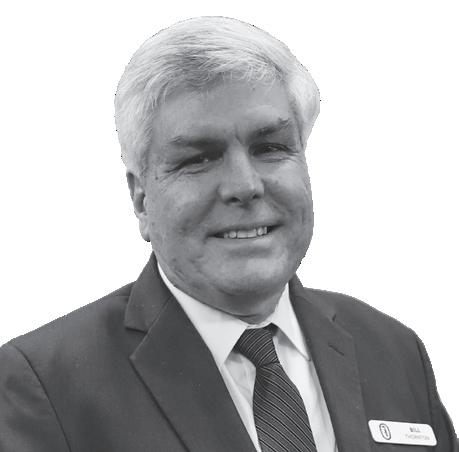

By Bill Thornton, President, National Chimney Sweep Guild






By Debbie Wiedwald, Vice President, Region 4 Director, and Advocacy Committee Chair, National Chimney Sweep Guild
The National Chimney Sweep Guild (NCSG) actively participates in and monitors several codes and standards organizations, including the National Fire Protection Association (NFPA), Underwriters Laboratories (UL), and the International Code Council (ICC).
The NCSG is represented on multiple NFPA standards development committees, including:
• NFPA 211: Standard for Chimneys, Fireplaces, Vents, and Solid Fuel-Burning Appliances
• NFPA 54: National Fuel Gas Code
• NFPA 31: Standard for the Installation of OilBurning Equipment
The current edition of each of these standards (NFPA 211, 54, and 31) is the 2024 edition.
Jim Brewer (jimb@surefire.online) serves as NCSG’s representative on the NFPA 211 committee, which is currently reviewing public comments. The second draft is expected to be available in March 2026, with the updated standard anticipated in 2027.
Daniel Freeman (dan@freemanfire.com) serves as NCSG’s alternate representative on the committee, which includes numerous chimney professionals among its members.
Jim Brewer also represents NCSG on the NFPA 54 committee. Members are currently reviewing public comments, with the second draft expected by March 2026 and the updated standard projected for 2027.
NFPA 31
The first public comment period for NFPA 31
remains open until January 7, 2026. A second public comment period will run from October 2026 through January 6, 2027. The next edition of NFPA 31 is expected to be published in 2028.
Steven Scally (firesidesweeps@comcast.net) serves as NCSG’s representative for NFPA 31.
Daniel Freeman also serves on two UL standards committees:
• UL 1390: Standard for Solid-Fuel Fireplace Inserts and Hearth-Mounted Stoves for Installation into Masonry Fireplaces
• UL 1391: Standard for Solid-Fuel Fireplace Inserts and Hearth-Mounted Stoves for Installation into Factory-Built Fireplaces
UL 1390 was published in November 2024, while efforts continue to validate and complete UL 1391. Testing to UL 1391 remains in progress and is required before committee review and publication.
The International Code Council (ICC) held its second review of Group B proposed changes in October 2025. Daniel Freeman continues to monitor proposed changes to ICC codes on behalf of NCSG.
NCSG extends its gratitude to all NFPA, UL, and ICC committee members for their continued dedication to chimney and venting safety.
Members with questions or comments regarding NFPA 211, 54, 31, UL 1390, UL 1391, or the ICC codes are encouraged to reach out to the NCSG representatives listed above. ■
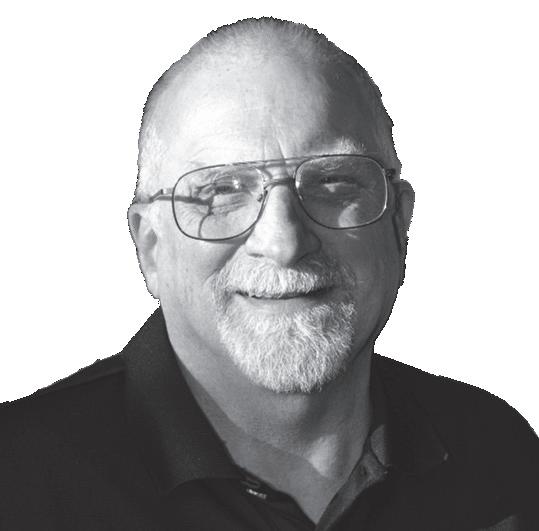
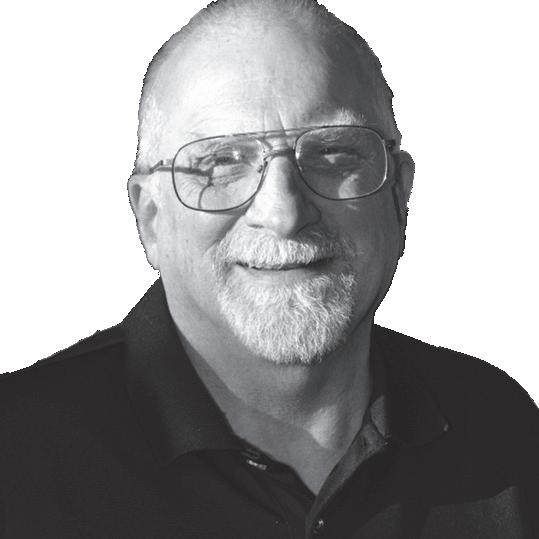
AAs some in our industry are aware, a new Underwriters Laboratories (UL) standard was published in November 2024 to address the installation of woodburning inserts into masonry fireplaces. That standard is called UL 1390 Standard for Solid Fuel Fireplace Inserts and HearthMounted Stoves for Installation Into Masonry Fireplaces. These requirements cover solidfuel burning fireplace inserts or hearth-mounted stoves intended to be vented through the throat or damper area of a masonry fireplace and masonry or factory-built chimney system. The appliances may be installed into new masonry fireplaces or masonry fireplaces that have been operated for some time,
By Russ Dimmitt, Director of Product Development, Lindemann Chimney Company
i.e., in these cases the fireplace insert or hearth-mounted stove installations are retrofits.
Some may assume that a UL standard for wood-burning inserts in masonry fireplaces has existed for years. In fact, no such test standard had ever been developed until UL 1390.
Many manufacturers took portions of the UL 1482 Standard Solid-Fuel Type Room Heaters designed for free-standing appliances and applied those to woodburning inserts into masonry fireplaces. Unfortunately, not all potential ramifications and test parameters are addressed thoroughly by applying UL 1482. As a result, a Standards Technical Panel (STP) was formed by UL
to develop a testing method and parameters for evaluating woodburning inserts in masonry fireplaces.
From start to finish, this specific standard development process took about 3.5 years. A few of the things that were considered (among myriad things) were existing combustibles under the hearth and hearth extension, various common fireplace construction flaws, i.e., improper firebox thickness, improper smoke chamber thicknesses and parged or not, masonry chimneys that have been extended with a factory-built chimney.
The discussions were lengthy and at times somewhat contentious. That is what makes the process
A UL standard is a published set of best practices for testing and evaluating the safety, security, and sustainability of a product or system, developed and voted on by experts across industries and interests. When a product conforms to a UL standard, the standard ensures quality and consistency in its materials, construction, manufacture, testing, installation, performance, and use.
successful: subject matter experts all with their own experiences over many years coming together and arriving at a solid conclusion.
Although UL 1390 has been in place for nearly a year, no manufacturer has yet released an insert tested and listed to the standard.
There are several factors in play that are responsible for this lag between the publication of the standard and any product being listed. Since this is a new UL standard, no test structures existed in November 2024.
Building a test structure is an expensive and time-consuming process. There are currently both manufacturers and test labs constructing test structures. In a nutshell, a masonry fireplace and chimney must be constructed exactly as specified in UL 1390. In some cases, multiple structures may need to be constructed depending on what each manufacturer wants to include in their listing. Once the fireplace and chimney structures are completed, a surrounding combustible structure must be built to UL 1390 specifications, and the testing equipment to monitor heat at specified locations must be installed. There are hundreds of details that need to be attended to for each test structure. With all the details, questions arise as to what exactly is needed in some cases. These must be addressed by UL, and in some cases, the questions
require reconvening the STP to obtain clarification of intent.
Once the structure is completed, preliminary testing will commence. Manufacturers want to have assurance that the appliance configuration they are going to attempt to list has a reasonable chance of achieving a successful test on the first try. When the manufacturer is comfortable with their own test results, they will engage with UL to do an official test.
In most cases, research and development departments are scheduled out for some time. With the standard first being published in November 2024, the manufacturer’s research and development folks may have UL 1390 on their radar, but there may be more pressing matters on their plate that have a greater urgency or return on investment before work starts on UL 1390.
With the history of wood-burning inserts being installed in masonry fireplaces for decades without a significant number of issues, urgency may not be there from a fire safety standpoint.
The new standard is designed to address some of the common fireplace defects that have been discovered. These defects were not previously addressed with testing and a scientific approach. A good example would be combustibles under the hearth, a common finding. Language in

previous insert instructions had language such as: “The fireplace must meet all applicable codes and standards and be suitable for burning wood to install this insert." That language would eliminate a lot of fireplaces from having an insert installed. The new UL 1390 standard allows the manufacturer to test with combustibles under the hearth and could allow such installations if testing proves it is allowable.
The same applies to other common defects. An apt comparison of a similar situation would be the UL 1777 Standard for Chimney Liners. UL 1777 allows a chimney liner in a chimney with insufficient clearance to combustibles if proper insulation and installation practices are used.
Marketing and sales advantages will likely be what drives appliances to be tested and listed to UL 1390.
How soon will we see UL 1390 listed appliances? I can’t say for sure, but it isn’t likely to happen in the near future. ■


















LOCKED-IN PRICING THROUGH 2025
PROTECTION FROM MARKET VOLATILITY
TOTAL PEACE OF MIND DURING BUSY SEASON



"Thank you, National Chimney, for being the oasis of stability in the midst of a storm."
— Chimney Monkey
Contact your sales specialist today to find out mor














TThe Hearth, Patio, & Barbecue Association's (HPBA) Government Affairs Leadership Academy (GALA) is the leadership training program in the hearth and barbecue industry.
By Debbie Wiedwald, Vice President, Region 4 Director, and Advocacy Committee Chair, National Chimney Sweep Guild

As a participant, you’ll learn together as a cohort from respected leaders and, over the course of 12 months, learn the skills to advocate for our industry at all levels of government. In addition, through a combination of in-person and virtual events, you’ll develop the skillset to be a defining leader for the rest of your career.
The National Chimney Sweep Guild (NCSG) would love to see more of our members involved in the HPBA GALA program. NCSG members can attend by registering through their HPBA affiliate membership.
Apply online for the 2025-2026 cohort at https:// members.hpba.org/Advocacy/GALA
Throughout the class, you’ll learn how government works at the local and national levels and how to use that knowledge to advocate for your business and the industry.
Session topics include:
• Understanding legislative and regulatory processes
• Policy impacts on the industry
• Preparing to engage with elected officials, case studies in successful meetings
• Advocacy tools and resources
• Understanding the impact of codes & standards
• Profiles in leadership from industry executives These skills will be on display as HPBA Government Affairs staff host GALA participants in Washington, D.C. to meet with their congressional members, committee staff, and other key stakeholders.
• Connect with leaders in our industry from all over North America
• Learn to create messages that are clear, compelling, and persuasive
• Understand how to connect with legislators and advocate for your business
• Participate in leadership discussions with executives from some of the largest companies in our industry
Watch for application details through NCSG’s members' discussion Facebook group and biweekly email newsletter (eNews).
If you have any questions, please reach out to Debbie Wiedwald (2024-2025 cohort graduate) at debbie@blackburnschimney.com. ■
The information used in this article was originally published on the HPBA website.

LLegislation continues to shift rapidly at every level of government. Local policies, state actions, and federal initiatives can change course quickly, creating both opportunities and challenges for the hearth industry. In recent years, statehouses have led the way on fuel choice legislation, but with a new administration and the swearing-in of the 119th Congress in January, attention has increasingly turned to Washington, D.C., where a wave of legislative and regulatory changes has emerged. From promoting federal fuel choice legislation to defending the biomass stove tax credit, the Hearth, Patio, and Barbecue Association (HPBA) and its members have been actively engaged. A highlight of this work was this summer’s Congressional fly-in, where industry leaders took their message directly to Capitol Hill.
What follows is a look back at recent state-level developments and an overview of the growing federal focus.
On July 1, Maine became the latest state to enact a fuel choice law, safeguarding access to propane, natural gas, and oil—an essential protection for rural communities where backup heat is a necessity.
Just a month later, New Hampshire reinforced its commitment to fuel choice when Governor Kelly Ayotte signed HB 428 on August 1. The law prohibits local legislative bodies from making
By HPBA Government Affairs Team, Hearth, Patio, & Barbecue Association

changes to the state building code. While communities may enforce the statewide code, they can no longer modify it with local amendments. Fuel choice is already established in New Hampshire, but this added uniformity prevents localities from advancing electrification through building code changes.
Meanwhile, on the West Coast, Washington State introduced new challenges for the wood sector— challenges that ultimately turned into a victory. SB 5174, a bill that would have required manufacturers to seek a separate state certification for wood stoves in addition to federal approval, threatened
to create costly barriers to market. HPBA, working closely with the Northwest HPBA Affiliate, successfully blocked the bill in committee. The effort was bolstered by Washington-based members who contacted key policymakers, underscoring the industry’s unified opposition.
The year’s most difficult challenge came from Congress. The Energy Efficient Home Improvement Credit—the biomass stove tax credit for qualifying wood heaters—was originally authorized through 2032. However, it was eliminated under the One Big Beautiful Bill Act, signed by President Trump on July 4. As a result, the credit now expires on December 31, 2025. Because the IRS requires that a product be fully installed in the year the credit is claimed, retailers and consumers face a compressed timeline. Consumers filing for the credit on their 2025 taxes will still need to provide the manufacturer’s qualifying identification number.
In June, Rep. Nick Langworthy (NY-23) introduced the Energy Choice Act (H.R. 3699) in the House of Representatives, and a companion bill (S. 1945) was introduced in the Senate by West Virginia Senator Jim Justice. If signed into law, the legislation would establish fuel choice nationwide.
Once the bill was introduced, HPBA and its affiliates quickly mobilized, urging House members to co-sponsor and pressing for a hearing before the Energy & Commerce Committee. HPBA staff also

hand-delivered affiliate letters to 255 targeted Representatives and Senators. The push proved effective: the bill now has 92 co-sponsors, and on September 16, Chair Brett Guthrie (R-KY) convened a committee hearing on H.R. 3699. The legislation now awaits a markup, where members can propose amendments, before advancing to the full House for a vote. While HPBA is optimistic about passage in the House, the effort continues as the Senate must also take up the measure.
On July 22-23, HPBA brought 43 members to Washington, D.C. for more than 50 meetings with House and Senate offices. The delegation included participants from the Government Affairs Leadership Academy (GALA), HPBA board members, and affiliate executive directors. Their mission was to build support for the Energy Choice Act to safeguard access to gas appliances, while also educating policymakers on solid fuel appliances and the EPA Wood Heater program.
So far, 2025 has been a demanding year on the policy front—and it’s far from over. With the continued support of its members, HPBA will keep working with policymakers at every level of government to protect and advance the industry. Stay tuned for updates, calls to action, and opportunities to make your voice heard in the months ahead. ■

HPBA board members, GALA participants, and affiliate leaders met with over 30 Congressional offices in July to advocate for the hearth, patio, and barbecue industry. Among the attendees was Debbie Wiedwald, NCSG's vice president, region 4 director, and advocacy committee chair.
Concrete Basics for Chimney Sweeps: Understanding the Building Blocks
Phillip Stoller, President and CEO, SaverSystems


The Inspection Edge: Unlocking Higher Close Rates, Boosting Revenue, and Maximizing Marketing ROI Through Inspection Driven Sales
Katie Poole, Owner, The Chimney Guys
Makeup Air 2.0

Brian Barclay, Vice President of Sales – Hearth, KW DRAFT


The CSR Playbook: Scripts, Systems, and Success Stories
Lauren Turnock, Head of Resources, Rooftop Chimney Sweeps



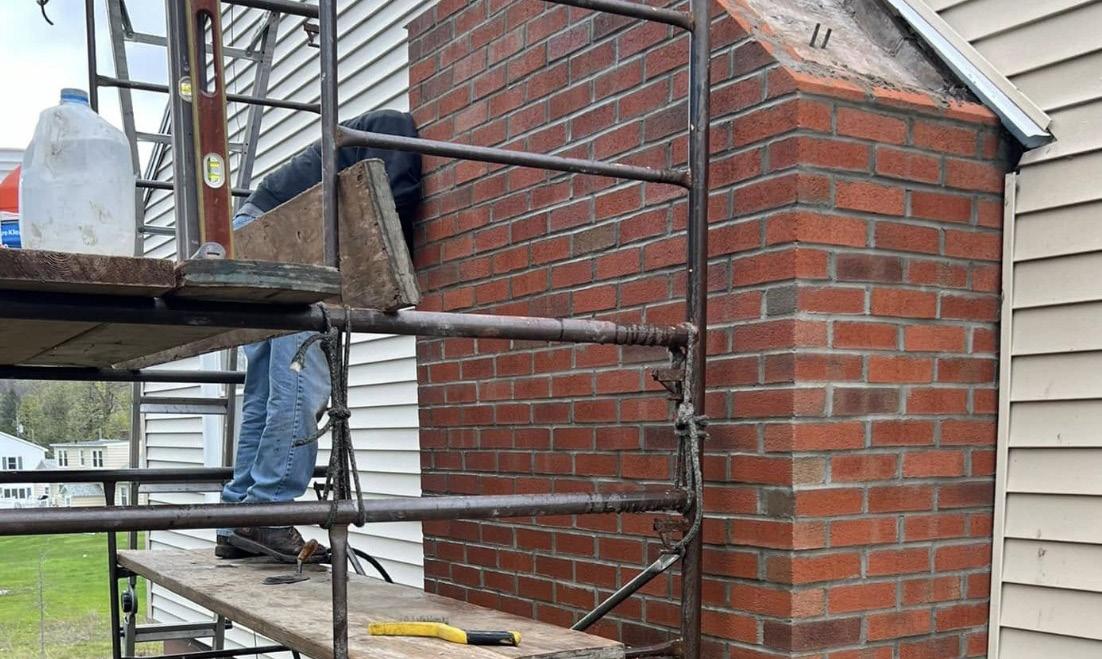
Which certification(s) do you hold?
Certified Chimney Professional
When/how did you get your start in this industry?
When I was just a little boy, I can remember climbing my dad’s scaffolding like it was a jungle gym. I am 33 now; for legal reasons we will say I started working at 14. So I am 19 years into the business.
What would you say to someone who is thinking about getting certified through the NCSG?
Please don’t be like the guys I’m following around town fixing their work. We are the only business with a certified sweep in our service area, and it shows.
What is one piece of advice you have for fellow industry professionals?
Education, education, and more education. Also don’t take your body for granted and always use PPE; it’s worth it!
What's something that people usually don't know about you?
I am a huge UFC fan! ■
There are no required prerequisites to take the Certified Chimney Professional (CCP) exam! We recommend at least 1-3 years of experience. Visit certifiedchimney professionals.com to learn more about the CCP!

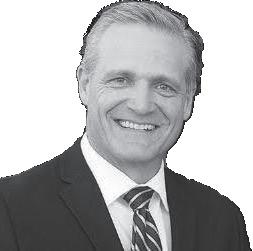
By Chris Van Leeuwen, Vice President of Professional Development, Veracity Insurance Solutions
As your chimney business grows and matures, it is common for an owner to change the business structure. You might start out as a sole proprietor then change to an LLC or a corporation as your business expands. These changes are strategic moves from a tax and legal standpoint. But there are hidden risks that are often overlooked during these transitions. The most common thing is the old business entity quietly falls off the insurance policy. This may not sound like a big deal, but insurance only covers the name(s) that are listed on the policy. If your old entity name isn’t included on the policy and a claim or lawsuit arises under that old entity name, you may find yourself without coverage.
When you worked under your old entity, you signed contracts, issued inspection reports, and may have had years of completed jobs. That exposure doesn’t vanish just because you restructured your business. A fireplace you cleaned or a liner you installed five years ago could still be the source of a fire today. If that fire leads to a lawsuit, the lawyers will almost always include every name they can find. They’ll name your current company, but they’ll also dig up your prior business name from old invoices or inspection reports.
If the old entity name is no longer listed on the insurance policy, the insurance company may not respond to any suits or claims that arise under that entity. And because of that, you may be left holding the bag for defense costs, settlement, or judgements.
Many assume that once they incorporate, everything automatically transfers over. Insurance companies treat each entity as a separate legal being. To them, “Main Street Chimney Service” and “Main Street Chimney, LLC” are two different insureds. Unless both appear on the policy, only one is protected.
The same risk applies if you’ve merged businesses, dissolved a partnership, or simply rebranded under a new trade name. Each of those names has a trail of past work attached to it. If you don’t keep them on your policy, you leave that work exposed.
The good news is that solving this problem is simple. When you change your business entity, talk to your insurance agent and ask them to list the old entity as an “additional named insured” on the policy. The best part is that most insurance companies don’t charge for additional named insureds on the policy and if a lawsuit shows up years later under your prior business name, your insurance carrier will respond to the claim.
It’s also a wise practice to review your policy at renewal to verify that none of the entity names have not been removed from the policy. It’s a quick and easy way to prevent an expensive surprise down the road.
If you have questions about coverage for prior entities, contact your insurance provider. If you work with Insurance Canopy (a subsidiary of Veracity Insurance Solutions), you can reach a representative at 844-520-6993. ■




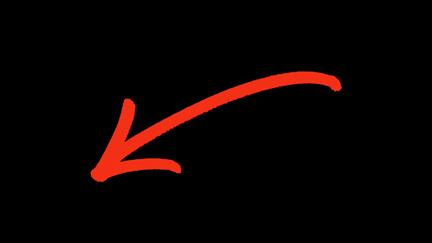










Mike Christian, CEO and Co-Founder, From the Future
In a trade that prides itself on grit and independence, safety can sometimes take a back seat to bravado. But “tough” doesn’t mean invincible. No one’s lungs are immune to decades of soot. Good training doesn’t just keep people safe, it also changes how they think about the job. It shifts the mindset from “get it done” to “do it right.”
That’s why the National Chimney Sweep Guild (NCSG) created a training system that’s both practical and flexible. With more than 120 interactive learning management system (LMS) lessons and a growing suite of virtual reality (VR) modules, chimney sweeps now have powerful access to real-world learning. Whether you have five minutes between service calls or an hour at home, the training is ready when you are.
At the core of the LMS is a focus on safety. Courses like Respiratory Protection, Carbon Monoxide Awareness, and Electrical Safety for Chimney Sweeps address the hazards sweeps face every day. These are not dry presentations. They’re narrated lessons with illustrations, field scenarios, self-check quizzes, and printable handouts ready for the truck or clipboard.
The platform also includes photography training. Whether documenting a cracked liner or proof of compliance, sweeps can sharpen their skills with Photography 1 and 2, which focus on framing, lighting, and reporting essentials.
For those building deep subject knowledge, the three-part Combustion Series offers a formal learning path. With beginner, intermediate, and advanced courses, each level builds on the last. Developed through several rounds of NCSG review, these lessons make combustion science clear and
accessible for a wide range of applications, from appliance diagnostics to complex troubleshooting.
While VR offers hands-on inspection practice, NCSG also invites members to try the LMS. To preview the format and flexibility, the Respiratory Protection course is free with guest access. It’s an easy, nopressure way to see the platform in action. To begin, visit https://ncsg-lms.ftfxr.com/free.php
VR lets sweeps step inside lifelike home environments with chimneys, appliances, venting systems, and draft conditions. Seven interactive modules walk users through guided and open inspections of masonry fireplaces, factory-built systems, wood inserts, basement furnaces, and more. Each session includes inspection points, narration, and a practice mode that encourages exploration. It feels like being there, and that kind of immersion is how real habits form.
One standout module, House Pressure: How Air Moves Through a Home, walks learners through airflow and backdrafting using simulated manometers and visual tools. It’s a strong fit for anyone looking to improve their understanding of system performance in any home and the surrounding environment.
Whether you’re exploring the LMS on a break or stepping into a virtual chimney at the shop, this training is made to meet you where you are. To learn more about the VR system, how to get started, or to try the free LMS course, visit ftfvr.com/ncsgsupport. It’s time to train today with tools built for the future of the trade. ■
By Eric Ebbert, Vice President of Sales and Marketing, SaverSystems
When you think of Christmas, what pops into your head? Probably twinkling lights, a crackling fire, and of course, the big guy in red himself.
But here’s the twist: the Santa Claus we all picture today, the rosy cheeks, the red suit, the jolly laugh, wasn’t exactly born out of folklore alone. Part of it came from Coca-Cola. And part of it… from a chimney sweep. Yep, really.
The Dutch Chimney Sweep and “Sooty Pete”
Before Santa got his famous uniform, his image was stitched together from scraps of legend. One of the lesser-known threads is a Dutch figure named Sooty Pete. According to folklore, Pete was a chimney sweep who slid down flues to help Saint Nicholas deliver gifts. Depending on which story you heard, he either handed out presents or, on his bad days, hauled naughty kids off in a sack. Either way, his job kept him covered in soot, which made him a natural fit for chimney lore.
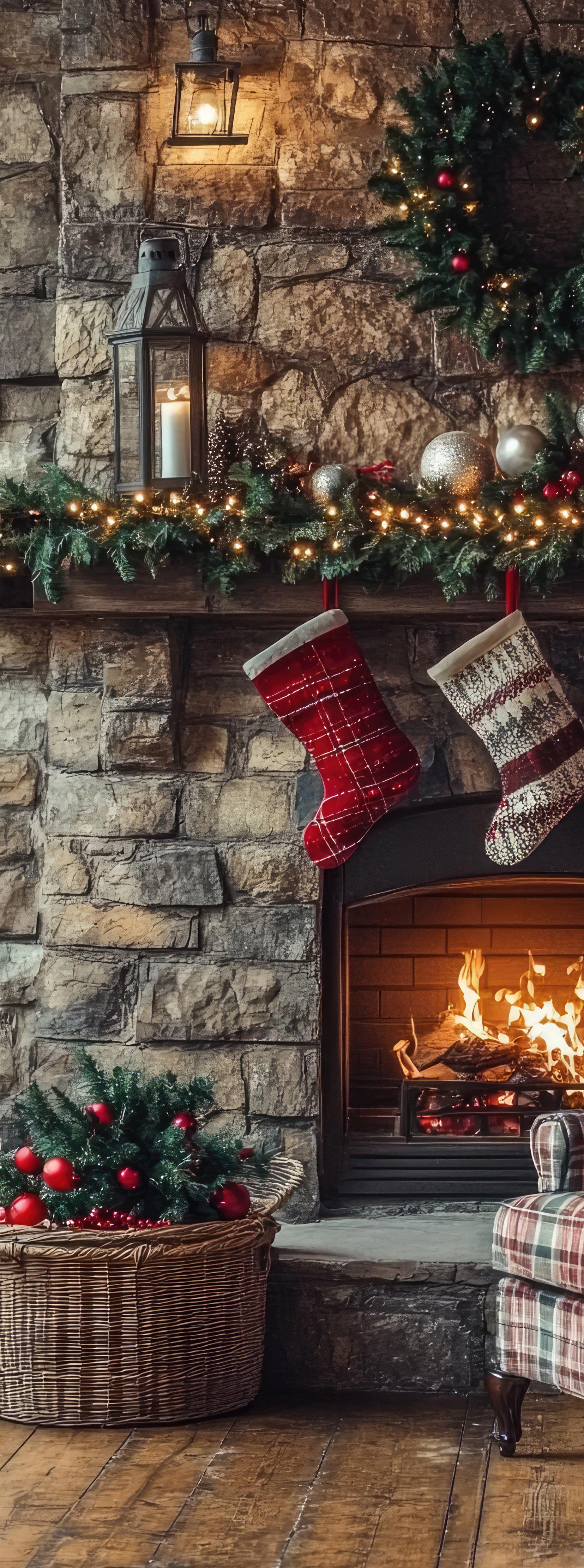
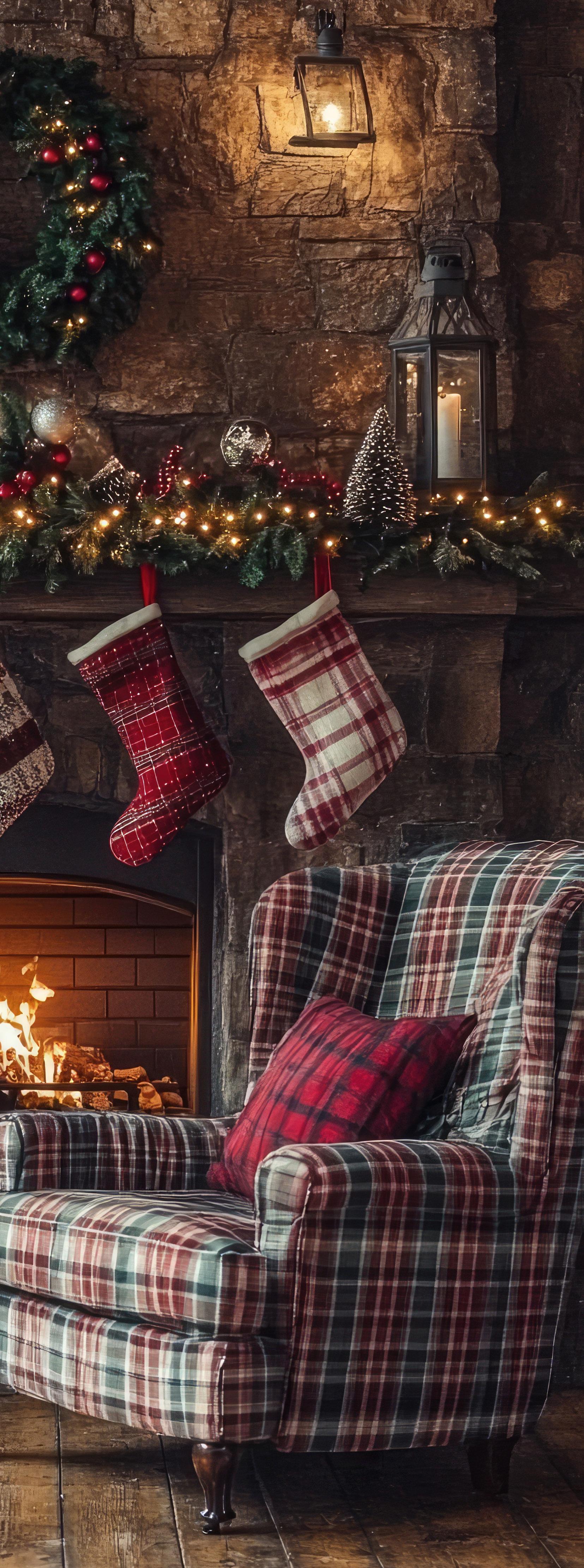
Santa’s character didn’t stop with Pete. The Catholic Church nearly booted Saint Nicholas out of the canon in the 1800s, but his reputation as a generous, miracle-working gift-giver stuck around. Mix that with the German Christkind (Kris Kringle), a kind of Christ-child figure who also brought gifts and then stir in Clement Clarke Moore’s 1823 poem A Visit from St. Nicholas. That’s the one with the “jolly old elf” and the sleigh full of reindeer.
Notice the common thread? The chimney. Moore cemented it as Santa’s route of choice for sneaking into homes. That idea, along with echoes of old Sooty Pete, stuck around permanently.
Fast forward to the early 1930s. Coca-Cola wanted to sell more soda in the winter, and Santa’s image was all over the place; sometimes tall and regal, sometimes small and elfin. So, they asked artist Haddon Sundblom to nail down a look.
The result? The Santa we know today: warm, plump, friendly, wrapped in Coca-Cola’s red and white. Sundblom’s Santa debuted in 1931, and the world never looked back. His artwork made Santa feel human, approachable, and perfectly at home in living rooms everywhere. It was branding magic.
Here’s where it circles back to you. Chimneys aren’t just brick and mortar. They’re the stage where Christmas magic happens. They’re Santa’s grand entrance. And sweeps? Well, we’re the ones who make sure the flue is clear for takeoff.
That connection is worth leaning into. Imagine a holiday promotion that plays up the idea of “Santa’s safe passage” or ties your work to the centuries-old story of chimney sweeps in Christmas lore. It’s fun, it’s nostalgic, and it makes your services feel like part of the tradition.
From a Dutch chimney sweep to Coca-Cola billboards, Santa’s story proves that branding and storytelling can shape entire cultures. Chimney sweeps are part of that story too! Every time you clean a flue, you’re not just keeping families safe, you’re protecting the doorway to a little holiday wonder.
So this season, as you’re out there braving the rooftops and hearths, remember: your work is part of the magic. ■




makes your company unique?
AAA Home Services Chimney & Dryer Vent Cleaning has built a reputation not only on technical expertise, but also on genuine care for both clients and employees.
We’ve been serving our community for over 50 years. Every member of our team—technicians, office staff, and CSRs—plays a vital role. Our clients can sense that we truly care about them and their homes.
What does success mean to you as a business owner?
Success isn’t just about growth, it’s about adapting to changes in the industry and knowing where your company stands. Sometimes that means stepping back, evaluating, and applying what you’ve learned in small, steady steps.
Those small steps often lead to greater progress over time. For example, providing proper equipment and protection shows our technicians that their safety matters and that we’re willing to invest in them. That, to me, is real success.
How do you envision the chimney industry 50 years from now?
Technology has already changed our industry dramatically. Twenty years ago, we were handwriting receipts; today, we use tablets and electronic invoicing. We have drones inspecting chimneys, cameras inside chimneys, and ceramic sealants and flexible liners that improve safety and performance. In the future, I see even better products and more training opportunities.
What’s something people usually don’t know about you?
I love meeting people, listening, and sharing a laugh. Humility is important to me. Even though being a business owner carries responsibility, I believe putting others first matters more. Staying grounded reminds me that we’re all in the same industry, and if we truly care for each other, we can all succeed. ■
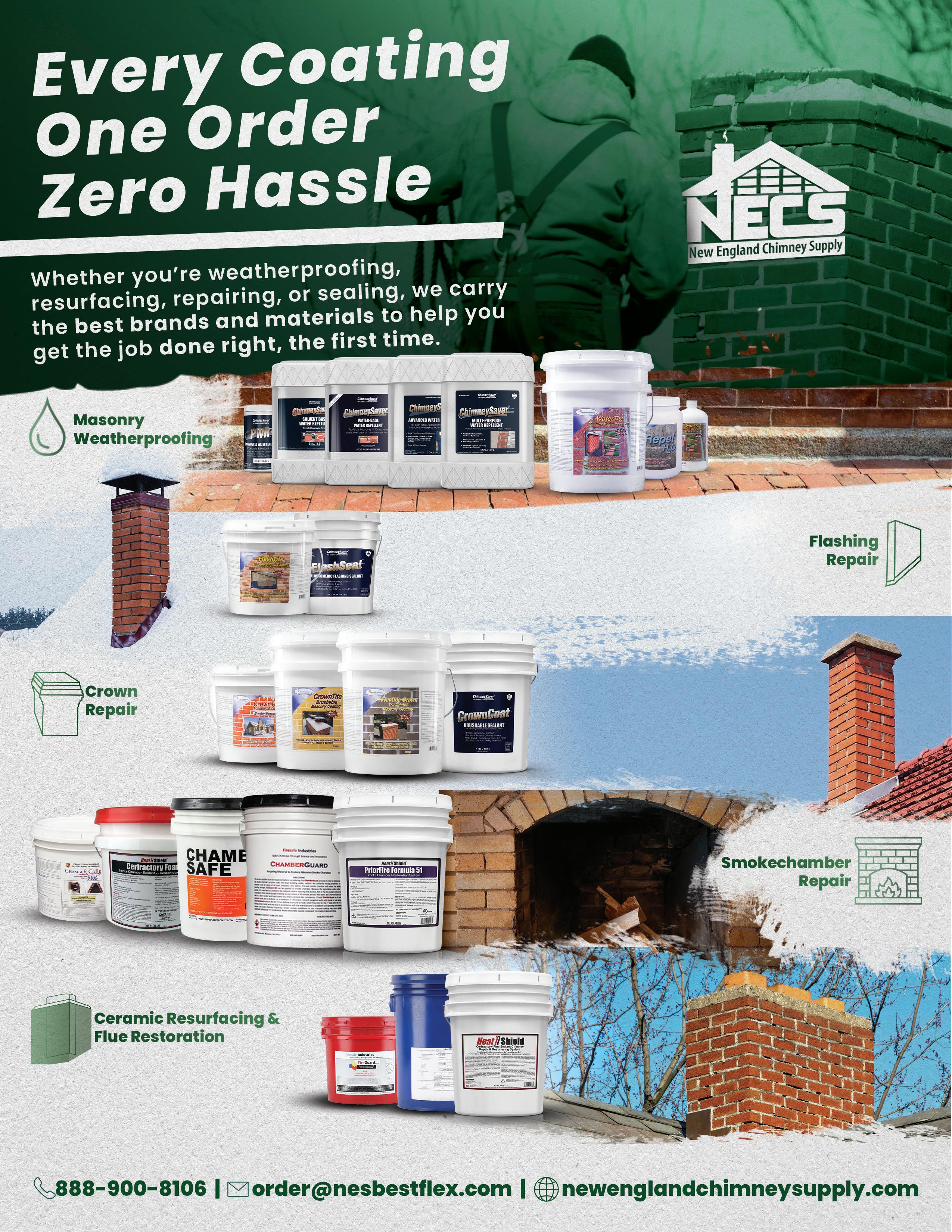
IIn 1982, Sally McKnight joined The Irish Sweep in Alameda, California as part-time office staff. What began as a small role quickly grew into a lifelong career. Over the years, she moved from the office to assisting with chimney sweeping, became a partner, and ultimately took ownership of the company. Her business has evolved through many stages.
“After the 1989 earthquake in the Bay Area, I had three sweep crews and two masonry crews. Even owned a dump truck!” Sally said. Today, The Irish Sweep runs two vans with three crew members on each job, a model that has streamlined operations while continuing to serve the community.
Sally credits the National Chimney Sweep Guild (NCSG) with shaping much of her professional journey.
“Friendships are probably the most valuable gift of being a Guild member,” she said.
Serving on the NCSG Board of Directors for six years was a highlight, along with attending countless educational events.
“I’m still learning; still professionally growing," she said. "It was a thrill to become certified years ago and then eventually to become a California State Licensed Masonry Contractor. Told friends over dinner one night that the state actually believes I have enough knowledge to build a freeway. Yikes!”
Her favorite Guild memories include conventions in San Diego and Philadelphia, which combined education with camaraderie.
When offering advice to fellow professionals, Sally emphasizes communication: “Always use the correct terminology. To use the correct terminology within the industry keeps people on the same page.”
Outside of work, Sally enjoys time at home. “I’m a nester,” she shared. “I love being home, taking care of my family and spending quality time in the kitchen making amazing meals.” ■

REGION 6



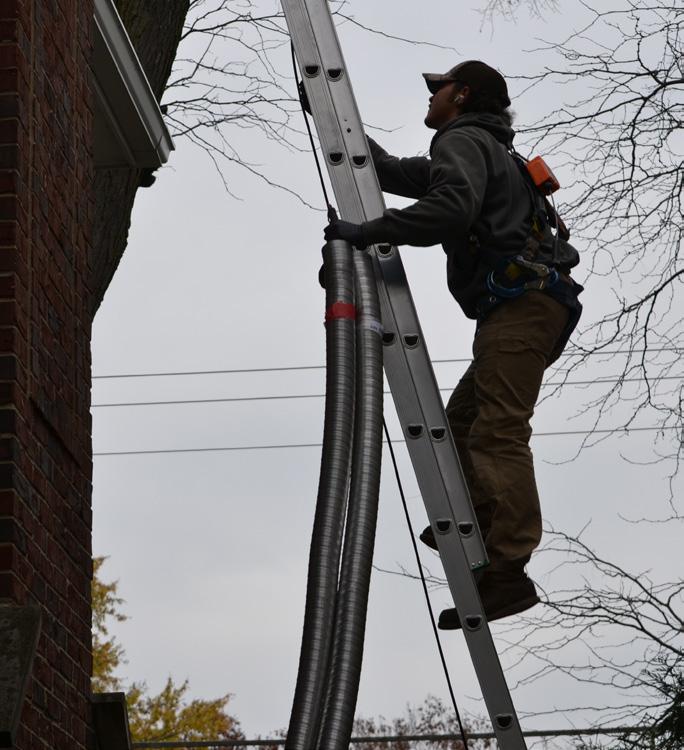







IIn our last history articles, we recorded as much information as we could find of early days of the Wood Energy Technology Transfer (WETT) organization. Now we would like to review the years moving forward with our affiliates and past presidents. All of these amazing volunteers worked with the board of directors and committees to lead the WETT program to where it is today. In the beginning, the regional affiliates did most of the field work of promoting and delivering the program. Here is some background on each one.
Ontario
Formed in 1988 by volunteer Board of Governors in association with the government of Ontario. The word “registered” is significant because it was granted by the government to confer a degree of authority and status as an alternative to the government taking on the training and certification functions itself.
ARWETO also hosted a trade show and conference known as the Wood/Gas Forum for several
By George LeBlanc and John Gulland, Wood Energy Technology Transfer
years in the early 1990s. The “Forum” in 1995 had indoor and outdoor booths for the display and demonstration of products and also offered a program of education sessions. Technicians from across the country attended.
The Forum became the gathering for all industry members to meet yearly to plan the events and training requirements for the following year. ARWETO had some advantages over the other affiliates (perhaps unfairly) because it was in the most populous province and was headquartered in the densely populated “Golden Horseshoe” of Ontario. The association also had support from the Ontario government, which had been a major funder (along with the federal government) of the WETT training system.
Nova Scotia
Formed on September 15, 1988 by the Wood Heat Steering Committee in Nova Scotia that had been in existence for several years. The first official meeting of AWETA was October 19, 1988.
In 1989, they ran their first WETT course, and 10 courses later, they had 248 members.
A “train the trainer” course was held in May 1990, and the pilot for the Volunteer Firefighters course was held with a great response.
Elizabeth Mason was the first chairperson who, with the help of Hal Dobblestyn (who worked for the provincial government), led the association to be recognized in the province and nationally for their public education.
By 1995, the local board had members from the fire marshal’s office, members of government agencies, insurance industry, and building inspectors.
Manitoba, Saskatchewan, and Nunavut
AWET-M was formed in the spring of 1989 by a steering committee from various aspects of the industry. In 1992, AWET-M was recognized by the provincial government through the GAS and Oil Burner Regulation.
Saskatchewan and Manitoba insurance companies provided support with the help of the
Prairie Loss and Prevention League (PLPL). Dan Hebert and Gerry Currie of Portage Mutual were founding directors.
David Rayner, a chimney sweep and WETT instructor, helped with the first 100 members getting certified.
British Columbia, Alberta, Yukon, and Northwest Territories
WET-BC held an annual meeting in Penticton in September of 1995. National Director and newly appointed BC Secretary Zigi Gadomski reported good attendance, an excellent presentation by guest speaker Bill Tully, and an exciting new board.
The appointment of a WET-BC board that is, for the first time, representative of almost the whole province, is a significant step forward. Less than two weeks into their mandate, these directors are already planning WETT courses.
New Brunswick and Prince Edward Island
A volunteer board of directors formed the affiliate in 1988. It was led by Ned Fisher, a distributor who owned a family business called Compact Appliances in Sackville, NB. Compact would become the largest supplier for most of Atlantic Canada.
With volunteers who had been directors of CWEI, Edgar LeBlanc with National Insurance Company, and retailers Patrick Bourque and Brian Dingee held the first WETT courses that were launched and delivered in 1989. By 1990, New Brunswick had three instructors: Arnold Culberson, Edgar LeBlanc, and George LeBlanc.
Public meetings were held at local farmers markets, municipal and provincial government sessions to foster and promote solid-fuel use. A stove changeout was campaigned and managed for New Brunswick.
The affiliates were promoting WETT training across the country with public education on solid fuel, at local municipal and provincial government events, local markets and distributor meetings.
Strong partnerships with WETT, HPBAC, APC, Environment Canada, NRC and several Canadian manufacturers brought a unified voice to a rapidly changing industry.
This momentum continued with the support of national insurance and regulatory participation, who stood behind the delivery of WETT training courses.
We completed our last history article with the Incorporation of WETT on December 15, 1992.
John Gulland and his staff were administering, reviewing and creating WETT courses and managing the day-to-day functions of the growing WETT program.
With a small group of volunteers on various committees, John continued developing new course materials and pushing forward.
The instructions from the board were to keep your head down and just keep working! ■
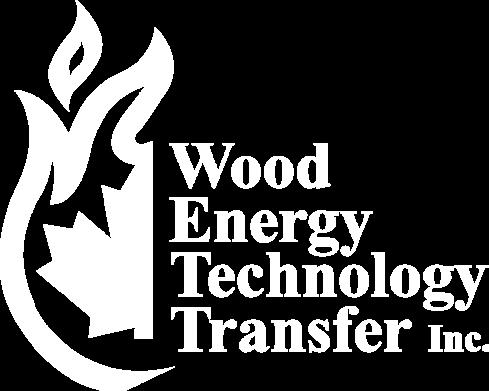
Wood Energy Technology Transfer Inc. (WETT Inc.) is a non-profit training and education association governed by a volunteer Board of Directors, elected by individuals who hold valid WETT certificates. Operating through our administrative designate, we serve as the national registrar of the WETT program. Our goal is to support the safe and effective use of wood-burning systems in Canada by offering training and public education.
To meet this goal, WETT Inc. manages the Wood Energy Technical Training (WETT) program, which:
• Offers training to people who sell, install, or maintain woodenergy systems.
• Confirms and recognizes skills and knowledge through courses and certification.
• Provides advanced or specialized training when needed.
WETT-certified professionals must follow a code of ethics and act professionally at all times.


By Jerry Isenhour, Coach and Consultant, CVC Success Group
Recruitment is an ongoing challenge for people in any industry. Don't think for a minute it is just you, your location, or our industry. Look around; you are competing with a multitude of businesses and industries for the available workforce.
I have often heard that "no one wants to work," but I cannot accept that. You have to put together a marketing and recruiting program that brings a steady flow of candidates to you, and you have to be determined to cull these to the right people that will represent your company. Once you have recruited them, you must have a pathway for their success.
To be successful, your company must understand what a 2025 applicant is looking for when making a career choice. Keep in mind, finding people who have a desire to enter the chimney service industry is not going to provide you with a long list of candidates. As such, you must develop a marketing plan using websites and social media, participate in local job fairs, and always be looking for new people. The following ideas are intended to provide you with some new recruitment strategies.
Applicants need to know that chimney service is not simply a seasonal gig, but rather a year-round career. Present a plan where they can understand this is a year-round service and a skilled trade with certification paths for them to follow. You must be prepared to show them how they advance in the trade through their efforts and building their skills. Create a road map that shows where they can go and the path to follow to get there.
Chimney work is physically demanding, and prospects want reassurance that they can make a living wage that is sustainable. The starting pay should be competitive with related industries such as HVAC, plumbing and other home service positions.
Offering bonuses and incentives also need to be shared with prospects in both the marketing and the interview process. They want to know what benefits you offer, such as health insurance, retirement plans, paid time off, and other benefits that make the job one that delivers them true value.
People do not grow up knowing about chimney service/sweeping unless they have watched Mary Poppins. But applicants need to know that the industry and your company are not fairy tales. Your applicants will need and expect strong training. To attract them you should offer a paid apprenticeship program. Along with this, they will need support and structured onboarding.
You will need to offer them support and training to obtain professional certifications in the industry. They also will require ongoing continuous training on safety, tools, and new technologies. And who will mentor them to accelerate their skill development?
The work of a chimney service technician is tough work; it is very strenuous. They will need quality ladders, fall protection systems, respirators, and PPE. Additionally, they will require safety training and safe job site practices along with training on OSHA standards. They need to know that you
are investing in the right tools and equipment to make the job easier and less strenuous. They will expect to be working in nice vehicles with the right equipment to do the job.
Often chimney service will have seasonal spikes; they must be made aware of the number of hours they are expected to work. Along with this, they need to know that there are no seasonal layoffs. Explain how you will keep them employed in the slower months with training, related services and maintenance work. Advise them of the heavy fall rush, which is a trademark of the industry.
Job seekers will often do due diligence on a company and the company’s reputation before they apply. They want to join a team with a company culture of respect, teamwork, and recognition. They also look for companies with community involvement.
Applicants with ambition want to know that a career with you is not a dead end. Share with
them how they will have a chance to run a crew or management positions they can move into. Let them know that they can have the opportunity to handle jobs independently once they are training. Make them aware that they can become trusted experts in the community.
Share with prospects the meaning behind the job. They want to feel that their work and contributions provide a life-safety mission (preventing house fires, provider cleaner air in homes, and reducing carbon monoxide poisoning). They need to know they are protecting homes and families, not just cleaning chimneys. The work will instill pride in them for their skilled craftsmanship and visible results.
The applicant that you want is searching for stability, professionalism, safety, growth opportunities, and purpose. If your company can present chimney service as a skilled trade with career advancement, not just a dirty seasonal job, you have better applicants and long-term team members. ■


PA Guild Winter Training Days, Board Meeting, and Holiday Party
January 23-24, 2026 | State College, PA
Join the Pennsylvania Guild of Professional Chimney Sweeps for two days of training, holiday banquet, and board meeting.
February 4, 2026 at 6:00 pm EST | Virtual/Zoom
This networking opportunity helps new chimney sweeps build their professional network while experienced members pay it forward by sharing their wisdom and life lessons.
February 7, 2026 | Asheville, NC
This course breaks down how air movement and pressure affect combustion appliances and what you should be measuring during inspections. CEUs available for attending!



2026 NCSG Convention & Trade Show
February 24-28, 2026 | Kansas City, MO
Let's turn up the heat together—whether it's pushing the limits of your business, embracing new techniques, or fueling your professional fire. Registration opens on Black Friday (November 28).














Drew Stein Region 3 Director
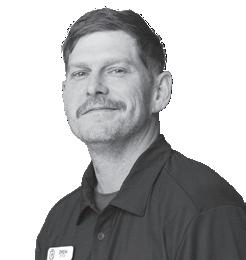
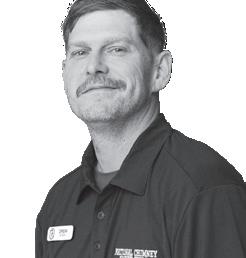
Over the past few years, I’ve learned a great deal about what my service area requires in order to perform the wide range of services my team provides. Some of that knowledge came through asking questions, and some came as reminders from my state licensing board. Staying current on these requirements is critical, not only to remain compliant, but also to ensure that the work we do is performed safely, responsibly, and to the highest standard. Licensing provides accountability, helps protect both the customer and the company, and validates that we are properly trained and equipped to handle the services we offer. For any chimney professional, keeping up with licensing requirements isn’t just about meeting regulations, it’s about doing the job the right way.
One of the most important areas where the National Chimney Sweep Guild (NCSG) supports its members is government affairs. Laws and codes that affect our work are changing all the time, from building standards and safety regulations to rules about emissions and licensing. In Region 3, where every state has its own approach, it can be tough for small businesses to keep up. That’s where the NCSG’s Government Affairs Committee steps in to track new developments and make sure our members have a voice when decisions are made.
NCSG members are encouraged to get involved, stay informed, and support the Guild’s advocacy efforts—because when we speak together, our industry moves forward. ■

Gary Smalling At-Large Director
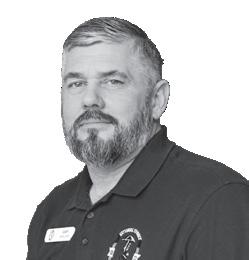

Education is on the move! As NCSG Education Committee chair, I'm excited to share a few key updates this month.
I would like to personally welcome the new National Chimney Sweep Guild (NCSG) Director of Education, Jonathan Erdman! I am excited for him to get acclimated with his new role.
There were a few great candidates for the position, but in the end, Jonathan rose to the top. I am sure he is going to hit the ground running. Congratulations!
New learning management system (LMS) classes have been added to the training platform. Start with our free respiratory protection course to see what it's all about! This course will explore the importance of respiratory protection and the science behind safe breathing practices.
Additionally, more virtual reality modules are currently under development.
The Residential Chimney Service Safety Manual is available now in print and digital formats on Amazon! Your regional or at-large director can also get you a copy. ■
from September 2025
Andrew Kalina Kalina Construction LLC
Christopher Brooks Chimney Guys
Mateo Chavez Bailey's Chimney LLC
Miguel Yanez Lords Chimney
Wyatt Free Ables Top Hat Home Services
The
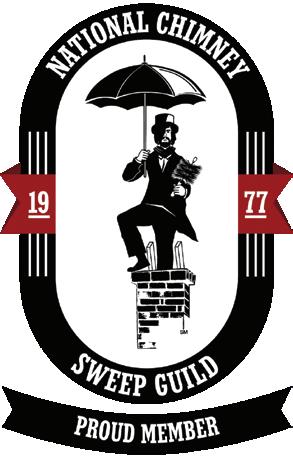
Kalina Construction LLC Peachtree City, GA Join Date: 9/8/2025
Spazzacamino Chimney Sweep Sevierville, TN Join Date: 9/25/2025


President; Region 2 Director
Bill Thornton Wissahickon Chimney & Fireplace wissahickonvalleysweep@yahoo.com


Region 6 Director
Michaele Dempsey Professional Chimney Sweep prochimneymichaele@gmail.com


Vice President; Region 4 Director
Debbie Wiedwald Blackburn’s Chimney Sweeps debbie@blackburnschimney.com


At-Large Director
Gary Smalling Smalling Masonry gary.smalling@smallingmasonry.com







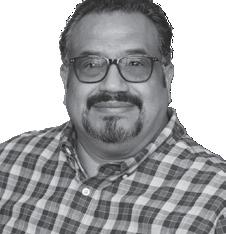
Treasurer; At-Large Director
Steve Scally
Fireside Sweeps firesidesweeps@comcast.net
Secretary; Region 1 Director
Robby Murphy
Hudson Valley Chimney Service rmurphy@hudsonvalleychimney.com
Region 3 Director
Drew Stein
Chimspector drew@chimspector.com
Region 5 Director
Roland Perez
AAA Home Services and Aaron's Chimney Services roland@myaaahomeservices.com
Advocacy
Debbie Wiedwald
Blackburn’s Chimney Sweeps
Bylaws
Brett Conklin
Chimney Monkey
Certification
Steve Sobczak
Total Chimney Care
Education
Gary Smalling
Smalling Masonry
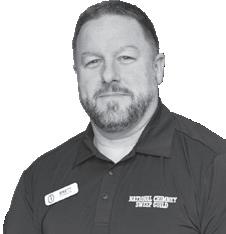

At-Large Director
Brett Conklin Chimney Monkey brett@chimneymonkey.com




At-Large Director
Lee Roff
Lords Chimney leeroff@lordschimney.com
At-Large Supplier Representative
Brian Barclay KW DRAFT brianb@rmmanifold.com
Ethics
Roland Perez AAA Home Services
Events
Brian Barclay KW DRAFT
Governance
Robby Murphy
Hudson Valley Chimney Service
Marketing
Lee Roff
Lords Chimney
Brett Conklin
Chimney Monkey
Membership
Michaele Dempsey Professional Chimney Sweep
NFPA 211; NFPA 54
Jim Brewer
SureFire Training Academy
NFPA 31; Tech. Advisory Council
Steve Scally Fireside Sweeps
UL 1390; UL 1391
Dan Freeman
Freeman Fire
National Chimney Sweep Guild
1255 SW Prairie Trail Parkway
Ankeny, Iowa 50023-7068
